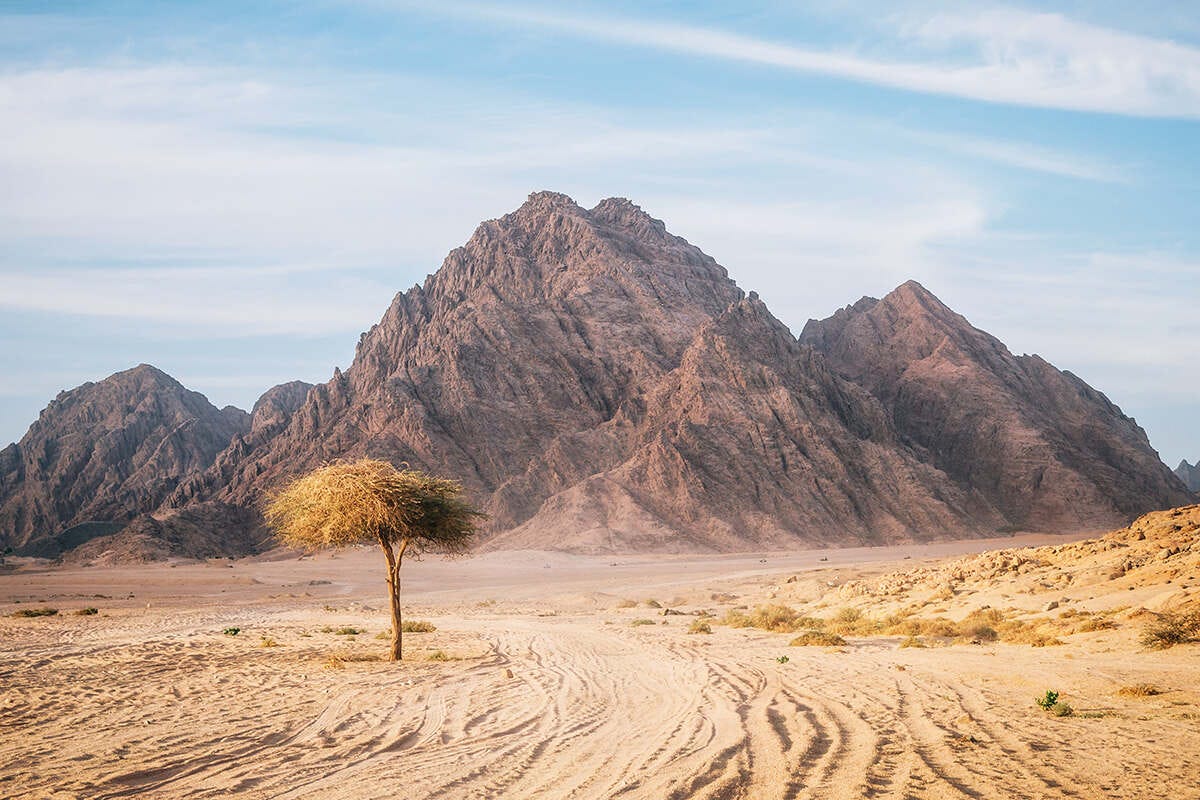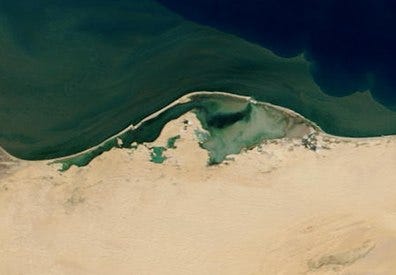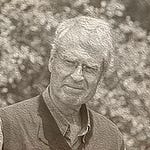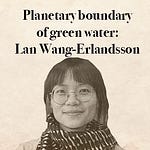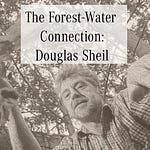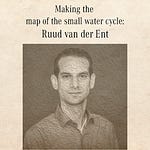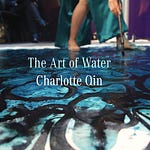Having been admiring their regreening project from afar for awhile, I was honored when I got the chance to interview Ties Van De Hoeven for this podcast, and learn about the whole array of techniques they would use for such a vast restoration undertaking. (The timestamps are available at end of this post).
I wrote an essay about the project :
Regreening the Sinai
The Sinai is a vast, wedge-shaped, tract of desert in northwest Egypt, sandwiched between the Mediterraen Sea and the Red Sea. A third the size of Florida, it is a land of bleached yellow sand, vast rolling dunes, and ochre cliffs. Vipers and lizards roam. The rugged landscape is made of granite and metamorphic rocks, limestone and sandstone chiseled by the wind. Vegetation is sparse. Scattered sparingly through the landscape are red-berried hawthorn trees, purple flowered thornbushes, fury green mirr higher in the landscape, and the prickly zilla lining the dry, ancient riverbeds that once carried water through the lush landscape. Less than 2 inches of rain fall down from the sky in a year. Half of that usually comes in one convective storm that brings with it mudslides and landslides crashing through the landscape.
This is the land that Ties Van der Hoeven and his team is working ambitiously to regreen. It started as a smaller project when Ties was invited to use his dredging skills to help rehabilitate Lake Bardawil, located in the northern Sinai, adjacent to the Mediterranean Sea. The project then morphed into a larger enterprise to regreen the Sinai, and bring rain back to the region. It is a lake-restoration dredging project that became a land-restoration ecology project that became a regional climate restoration project. “Weathermakers”, Ties calls his team.
[my interview with Ties van der Hoeven in video form]
Early on, Ties Van der Hoeven connected with John Liu, a videographer turned eco-ringleader, who had documented the ecorestoration of the vast Loess Plain desert in China, and founded the network of Ecosystem Restoration Camps. John connected Ties with what he refers to as his team of Jedis, a team which includes people like John Todd, the ecologist who pioneered the use of emergent communities of microbes and plants to heal ecosystems, and Millan Millan, a hydroclimatologist who helped us understand how vegetation creates rain.
Working together, the code for how to regenerate the desert began to emerge. It involved jumpstarting things just enough that nature could then take over. It entailed understanding how to get numerous feedback loops going - that between soil and microbes, between fish and plants, between carbon decomposers and carbon composers, between ecology and geomorphology, and between vegetation and climate. It involved setting in motion nutrient pathways and ecosystem self-regulation. Human technology would be used not to further separate man and nature, but instead to catalyse ecorestoration.
Lake Bardawil is a 19 mile long saline lagoon, separated by a three meter sand-bar from the Mediterranean, and shaped like a triangle with a fish tail. The lake contains a memory of what happened long ago. Stored in its sediment, preserved by salt, and layered over by sand, were the complex carbon chains of long dead vegetation and animals that once dotted the lush Sinai. The lake, once twenty to forty meters deep, was now just 1.3 meters deep on average.
This lake history holds the seeds of regenesis. Ties’s team first step is to reawaken the slumbered sediment. Geomorphology will activate ecology. Opening inlets and creating tidal gullies will allow the water from the Mediterranean, cooler and less salty, to come in to stir up the sediment, so that the sediment can once again enter into the carbon cycle arena. Here microbes, algae, diatoms will feed on it, pooping out nutrient material. Some of the sediment will escape through the inlet and attract fish towards the lake. Tides will bring some of the lake waters onto the mudflats where microbes can break down the sediment into soil. Saltmarshes will enlarge, and attract more birds. Over time food webs will grow in the lake - seagrass, bacterioplankton, zooplankton, miobenthos, mussels, crabs, bass and mullet - more biomass and more material that can become soil.
The next stage in the project is to regenerate the land, to figure out how to grow vegetation on the sandy land with little or no rain. “Water begets water, soil is the womb, vegetation is the midwife” is the aphorism that Millan Millan expounds. Soil is the womb that absorbs water and grows the vegetation. Vegetation is the midwife that facilitates in the rain. When there is enough water in a system, it will attract more water.
A decent proportion of the two and a half billon cubic meters of lake sediment from Lake Bardawil will be dredged up to use as soil in the Sinai peninsula. The plan is transform the salty sediment into nutrient-rich soil. The sediment will be laid out in shade-covered fields, where a serial progession of halophytes (salt tolerant plants) - grasses, potatoes, and then salt-friendly trees, will grow in them to help transform the sediment. They will also use a multitude of transparent geodesic domes, each containing a variety of tanks. In them, they will set up aquaponic systems, where microbial communities will grow, and where fish will eat plants, and plants will feed off the fish poop in a feedback loop that creates more nutrients. These nutrients are then used to enrich the sediment. The fish are delivered to enrich the local economy. And each day the saltwater in the tanks will evaporate, and then condense on the geodesic roof to form indoor rain which irrigates the soil.
The nutrient rich soil and plants will be transported up to key places in the Sinai landscape where winds bring more water vapor. Fog nets will initally be set up to help with irrigation. As the plants and trees grow, multiply, and spread, there will be a point when the nascent ecosystem evolves to cross a critical point, a meteorological threshhold. Then something rather extraordinary will happen.
From the wild sky, precious rain will begin to appear more frequently.
The is because the relationship between vegetation and weather is reciprocal. It is not a one way causal relationship. Rain grows vegetation. And vegetation can also grow rain. Not only does climate affect biology. But biology affects climate.
The hydroclimatologist Millan Millan figured out this causal logic while researching why rain loss was happening in Spain. Chopping down Spanish vegetation was decreasing the evapotranspiration, and that evapotranspiration was both needed to add to the ocean water vapor to create sufficient humidity for rain, and needed to cool the atmosphere so that the dew point for water vapor condensation was lower. [ref 1] In the Sinai, a continental divide like Spain, thermals rising from the desert create a low pressure system which sucks in the air from the Mediterranean Sea. The winds gain velocity, sweep across the dunes, ascend over southern Mount Catharina, and then rush out into the Red Sea. The water vapor the wind carries, usually has nary a chance to drop onto the hot, parched land.
As Millan Millan studied the meteorological situation in the Sinai he concluded that when the vegetation became abundant enough, they would evapotranspire enough water vapor to add to the sea wind moisture, to be able to create rain. The cooling effect of the evaporotranspiration would also help slow the water vapor molecules, increasing their chances of nucleating into rain. Tree create turbulent friction in atmosphere that can decrease wind speed enough for water vapor molecules to find each other. The formation of the rain would help the winds to slow down, and the winds would even turn downward and flow back to where it came from. The rain would infiltrate into the soil, and then be ready to evapotranspire back up to help create the small water cycle.
Once this biology-rain feedback loop is activated, other parts of the ecological engine can then rev into motion. Birds will spread seed across the landscape. Animals will eat food with seeds that they then poop everywhere. With enough soil and rain now in place, these seeds can grow and multiply. To emphasize this sometimes undervalued part of the regenerative cycle, perhaps we can add another clause to Millan Millan’s aphorism. “Water begets water, soil is the womb, vegetation is the midwife, animals are the matchmaker.” Or maybe it could be “Water begets water, soil is the womb, vegetation is the midwife, animals are the seed spreader.”
The desert is probably not the only equilibrium state of the Sinai, a thriving ecosystem may also be one of its equilibrium states [2]. After all, the Sinai and Sahara was lush and fertile 10,000 to 7,000 years ago. A wobble in the earth orbit may have affected the climate then. In addition, human intervention may have hastened the destruction of the land. Forests were clear cut for the ancient civilization, which could have set off feedback loops of destruction. Its possible cutting riparian trees led to flooding, which led to less topsoil, which led to less vegetation, which led to less rain, which led to vegetation dying out. Ancient civilizations may have set off ever-increasing flood-drought cycles. (Increasing man-made flood-drought cycles are also happening now).
As Ties and his team explored more the ripple effects of their regreening effort, they realized it would not just shift the weather patterns in the Sinai but also in neighboring regions. As the vegetated land slows and stops the wind, less water vapor is blown out to the Red Sea and the Indian Ocean. That water vapor is instead redirected to Northern Africa, Israel and Lebanon, creating rains there. Having less water blown into the Indian Ocean could lead to less cyclones and monsoons there. Quite possibly, if the Sinai had been regreened already, the 2022 Pakistani floods would have been much smaller, because the atmospheric rivers that originated in the Indian Ocean and then blew into Pakistan, would have been slighter in scale.
There are certain terrestrial acupoints where if we regreen it will have an outsize impact on the climate. Continental divides are one of those places. Across this land, water blows from sea to another. If the wind does not stop to rain over the land, because it has been degraded, then all that water vapor is instead transferred to the sea which influences hurricanes and storms around the world. If the land is regreened it will help the winds to pause over the land and rain, increasing small water cycles and moisture hopping. The wind will shift and change rain patterns in neighboring countries. Changing the land cover in Spain not only affected the weather in Spain, but also changed the weather in the rest of Europe. Changing the landcover in the Sinai not only will affect the weather in the Sinai, but will create more rain in neighboring countries. (This has led me to ponder if there are other continental divide weather acupoints elsewhere in the world. See below after this essay for my idea)
The Sinai is a source of pride for the Egyptians, an ancient land where much of history was written. Perhaps too in the future, we will remember it as a place where parts of an important chapter of Earth history will be written, the chapter where humankind learns and implements the codes for vast large scale land and climate regeneration.
…………………………………………………………………………………………………………………………………………………………
Continental Divide Acupoint: Bringing back water to the Western US
Idea for discussion: Winds blow from the Pacific Ocean across Southern California and Northern Baja into the Gulf of Mexico. Those winds are carrying a lot of water vapor, and there is a lot of it that does not rain out on the land. If we regreen large desertified areas in that region we can cause a lot of water that is now escaping into the ocean to instead descend onto the land. One example of such a region is the vast tract of desert in Imperial Valley, California. Rodger Savory is proposing to regreen this desert by growing fungi, soil, and plants under a layer of cow dung. It seems to me that the desert regreening effort can slow the winds enough and change the water cycle. Winds will bring potentially lost water vapor up into Arizona, Colorado, Utah, New Mexico, and into the Midwest. The Colorado River will then receive increased precipitation, which will then give the West Coast of the US a lot more water supply, helping with the water scarcity issues…….. [What do you think of this idea? You are welcome to comment below]
……..
This podcast interview with Ties van der Hoeven is also available on the Climate Water Project channel on Spotify and Apple podcasts.
……….
[1] Millán M. Millán, Extreme hydrometeorological events and climate change predictions in Europe, Journal of Hydrology, Volume 518, Part B, 2014, Pages 206-224 https://doi.org/10.1016/j.jhydrol.2013.12.041
[2] Giorgio Parisi, who won the Nobel Prize in 2021, showed that a climate could have two different stable climates, and that random fluctuations could cause it to oscillate between them. This means the Sinai could possibly have two stable climate attractor states, one of desert, and one of vegetation. (to read the paper in the link go to sci-hub.st and type in the doi number. Also this link might work on your computer)
……..
Please share this post if you feel moved……
This is a reader supported publication. A reading of back issues can be useful to a deeper understanding of more recent posts.
“Regreening the Sinai” podcast Time Stamps
12:15 Lake Bardawil
15:25 John Todd, eco-machines, aquatic food webs, purifying water, geodesic domes
20:15 upgrading lake sediments to soil, growing plants, fog nets
31:00 bringing excess glacier water
36:45 bringing up the soil up the land
37:25 birds spreading seeds and regreening the land
44:30 restoring the water cycle, bringing back the rain, shifting the winds



